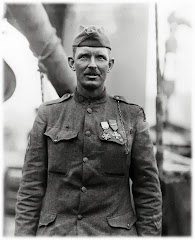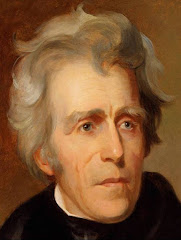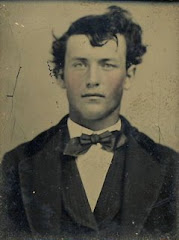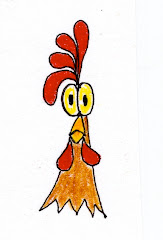It was one of Marlene’s cookbooks that got me to thinking about the subject of community in my last blog entry. The cookbook is a 238 page, plastic-comb-bound, community cookbook that was put together and sold to raise money for the New Hope Fire Department woman’s auxilliary. I think I have that correct based on my memory. I can’t be sure because the cover and first few pages are missing, which gives you an idea of how much use the book has gotten since the early 1980’s when it was published.
(By the way, New Hope is the rural crossroads town that my family moved to from a suburban housing project outside Syracuse in 1973, when I was in ninth grade)
Such cookbooks, containing recipes from people living in a given community, are common in rural areas of America. They are nothing new. I have a Depression-era community cookbook published by the "Fidelis Class" of the Congregational Sunday School in Moravia, N.Y.
I think community cookbooks are wonderful expressions of community and, as I leafed through Marlene’s cookbook, looking at the names of the contributors, I found myself thinking about some of those people...
Janet Badman (strawberry rhubarb crisp)
When my family moved to New Hope, we attended a little Baptist church that was in a refurbished one room school house. Kenneth and Janet Badman and their four children (all close to me in age) attended that church. They had a small dairy (milking maybe 70 cows) and crop farm on Glen Haven Road. Before long, I was helping them unload hay wagons in the summer. After high school I worked a full year on their farm and saved enough to buy my first car. Janet died about a year ago. Her husband and two sons still run the family farm. They are the hardest working farm folk I’ve ever known.
Hazel Badman (fruit salad)
Hazel was Kenneth Badman’s mom. She and her husband operated the farm before her son took it over. Hazel lived in a house by the main barn while Kenneth and Janet lived a couple stone throws down the road. Every day at milking time, Hazel would give "Nutty Buddy" ice cream cones to her son and grandsons and me, the hired hand. It was like a little family tradition, and quite a treat.
Joann Head (rye bread dip)
The head family has a nice dairy farm on the state road at the north end of town. Three sons operate the farm. Joann is married to the youngest son, Leonard. I got to know Leonard one summer when I helped to build a big addition on the back of their cow barn. They gave me an old telephone pole that was lying around and I used it to hook up a temporary electric service when I built my house.
Jane Jayne (Grandfather Walter’s cheese pastry)
Wally and Jane Jayne have a dairy farm on Old Salt Road. The farm was cited in 1946 by the governor of New York as a Century farm which means it had been in the same family for over 100 years. Wally is the sixth generation Jayne to farm the land. Fact is, Wally’s ancestor bought the farmland from William Tuttle who was deeded one square mile of land in payment for his three years of service in the Revolutionary War. The Jane’s even have William Tuttle’s military discharge signed by General Washington himself. I first met Wally the summer I got a job helping a local guy spray paint barns and silos. We painted Wally’s barn roof. None of the Jayne children were interested in the dairy so Wally sold off his herd a couple years ago. Their farm is around the corner and just down the road from where I now live.
Kay Nast (zucchini ham casserole)
Jerome and Kay Nast had a small dairy farm on White Road (around the corner and just up the road from me). Jerome also drove school bus. Both Jerome and Kay have passed away but their son still runs the farm and has a firewood business. I buy my firewood from him every year.
Anna Buckler (Vermont pork chops)
Anna’s father, Les Ready, had a place on the state road south of town. In his later years he kept his hand in farming by growing a couple acres of potatoes. One year, I spent two days helping to pick the potato crop. At lunch time, we all sat down to a great home-cooked meal that Anna and her mom had prepared.
Olive Adams (cider cake)
Gerry and Olive Adams lived in a tidy little house at the bottom of New Hope Road. I remember Olive teaching Sunday school to the Badman boys and me at the little Baptist church. She was a wonderful artist and gave me painting lessons (but I was a hopeless case). She and my mother became best friends. Both Olive and Gerry have passed away.
Mary Murphy (Swiss chard and spinach pie)
Mary Murphy was my mother. The swiss chard and spinach pie was her only recipe contribution to the community cookbook. It was a pretty good dish that I had forgotten about. Maybe I can get Marlene to make it for me someday.
Thelma Stayton (oatmeal crispies)
Thelma’s husband, Don, had his own excavation business. When I built my house, I hired Don to dig me a well with his backhoe (it was only 10 feet deep). He and his son, Gary, put my septic system in. He lived close enough that he just drove the backhoe from his house.
Lois Weed (four way cake roll)
Leland and Lois Weed and their children also attended the little Baptist church. Leland owned New Hope Mills. I worked for him at the mill bagging pancake mix after school, on Saturdays, and during vacations for awhile when I was in high school. It was a great little job just a short walk up the road from my home. Leland passed away a few years ago. Lois attends the Baptist church my family now goes to. It is in a big, remodeled, farm pole barn. Her youngest son, Dale, is the Pastor.
Mrs. John Nemec, Sr. (European cheese pie)
The Nemec family has a farm that backs up against the banks of Bear Swamp creek, which ran across from my house, and I spent a lot of time as a teenager exploring down the creek. I’ve never really known the Nemecs that well. But I’ll never forget that when my dad broke his leg, and was out of work for months (he is a diabetic and doesn’t heal well), and money was tight, I came home from school one day to find a load of firewood in the driveway. I was told that John Nemec’s son, Steve and his brother in law, Bill Carmon (Jane Carmon-hot fudge sauce), cut it and gave it to us. That was a real neighborly thing to do.
Mary Edmonds (molasses crumb cake)
After getting a year of building trades school under my belt, I came home to try and find a carpentry job. I wasn’t very confident in myself, but The Badman’s, who I had once worked for, told me to go see their neighbor, Clancy Edmonds, about a job. They had already spoken well of me to Clancy. I got the job and worked with him for five years jacking up camps, repairing barns and remodeling houses, mostly right in the New Hope area. Clancy and Mary came from New Jersey and bought the old Freeman farm. During the summers, I spent a lot of afternoons helping Clancy get his hay in the barn. When I built my house, Clancy donated a set of stairs he once salvaged from a camp on Skaneateles Lake, and an old Andersen window he salvaged out of the Freeman house when he remodeled it. The stairs and the window are still part of my house.
Kay Scavone (noodles and cabbage)
Mrs. Scavone was an elderly lady who lived in a run-down old trailer. She attended the little Baptist church. I remember sitting next to her at a Jack Van Impe crusade in Binghamtom and when it came time for the alter call, she leaned over to me and asked me if I wanted her to go up with me.
Anna Hobart (saucy surprise cake)
Stan and Anna Hobart and their four children lived next door to my family. Stan is retired Navy. Anna sold Avon. Their oldest son, Rob, was my age. One day he and I took a canoe from the pond in New Hope way up into Bear Swamp. We had to get out and pull it up over beaver dams. After awhile we were in a vast expanse of open swampland that was so secluded and wild that we felt like we were the first humans to ever go there.
Esther Stoyell (chili sauce)
I think the first white man to walk into these parts may have been a Stoyell. The family name goes way back, and there are still several Stoyells in the New Hope area. Harold and Esther once ran the little country store that was on the corner in New Hope. I remember going on a nighttime church hay ride through the dirt roads of Bear Swamp State Forest and out to Bentley’s Knob. We had a big campfire there and Harold played his harmonica.
Georgie DeWitt (chicken casserole)
There’s also lots of DeWitts hereabouts. My parents bought their home from Georgie’s son, George (Sharon DeWitt-pumpkin bread). When we bought the house, we also got George’s dad’s old F-20 tractor. He gave my dad and me a lesson about how to hand crank a tractor to get it started. Another son, Don, is crop farmer. Don used to help Clancy Edmonds and I with the carpentry work when there wasn’t much farming to do. He once let me tear a granary out of his barn and keep the lumber. I used it to build a shed on my land, before we built our house.
I could go on but I’m probably boring you. There are so many more names and memories associated with just that one little cookbook and this little community of families. Many of the names are of people who have died. That is inevitable after 20+ years. But an updated edition of the New Hope community cookbook would contain the names of many children and even grandchildren of the above people, as well as new people who have moved into the community.
Keep in mind that this book came out of a relatively small community. You could go five miles down the road to the next crossroads community with a fire department and put together a completely different community cookbook, though you would undoubtedly see many of the same last names.
I believe God created us for community, and wherever people congregate for any length of time, some sort of community develops. Some community experiences are deeper, richer, and more fulfilling than others. When, as a boy, I lived in a suburban housing project, I experienced good community, but it was nothing compared to the rural community my family moved to, and which I still live in.
In the suburban setting, there was a close concentration of people, a prevalence of ungodly influences, lack of wide open spaces and natural settings, and higher turnover of people as families moved on to something better (the elusive American Dream). None of those things contribute to the best example of community.
My point with all this is that it is a beautiful thing to live in a rural area and become involved in the life of the community over the course of years. To raise your children, live your days, grow old, and die within such a setting, surrounded by neighbors you’ve known and trust and care for, is a blessing. I can’t help but think it is the way life should be.
Holiday Series: The Cuisine of My Ancestors
-
I had a lot of fun doing last year's Christmas series, Christmas Songs of
My Ancestors. One of my hobbies is genealogy, and exploring my family tree
from a...
1 day ago


































































.jpg)





















































No comments:
Post a Comment